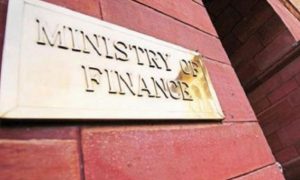Amid the ongoing Paytm crisis, the Reserve Bank of India on Thursday proposed to introduce a framework for the authentication of digital payments during the MPC announcement.
Read More: RBI announces offline transactions for Digital Rupee; here’s what new CBDC move means
This announcement comes at a time when the Unified Payment Interface has changed the face of online transactions in India as many people are now opting for digital financial services like BHIM, Google Pay and PhonePe.
The monthly announcement of the Monetary Policy Committee (MPC) by the central bank to decide the lending rate for private banks also expressed concern over the growing market of digital payments via UPI. As per RBI reports in July 2023, the UPI transactions have spiked by 428 per cent in the last three years.
Speaking on online money security, RBI Governor Shantiniketan Das said, “Over the years, the Reserve Bank has proactively facilitated introduction of various mechanisms such as Additional Factor of Authentication (AFA) for securing digital payments.”
Programmability will facilitate transactions for specific or targeted purposes, while offline functionality will enable these transactions in areas with limited internet connectivity, the RBI Governor further said.
Read More: TCS Employees Attention Please! Return To Office By This Month Or Face ‘Serious Consequences’
Digital Payments: Need for Authentication
The alarming rise in digital crime rates has forced the authorities to look for more security apart from just SMS-based One-Time-Password. In a usual transaction through UPIs, the bank asks for the OTP for authentication of the transaction. However, new-age cybercriminals are finding loopholes due to increased technological advancements. This has resulted in a sharp surge in OTP frauds on these user-friendly apps.
According to the finance ministry records, India reported over 95,000 cases of UPI fraud in the 2022-23 fiscal.
According to a PTI report, account-to-account (A2A) payments are projected to increase their share in e-commerce payment methods from 15 per cent in 2022 to 24 per cent in 2026.
Read More: RBI Monetary Policy February 2024: 6 Major Announcements By Central Bank You Want To Know
Cash was dominant just a few years ago, accounting for 71 per cent of POS transaction value in 2019, but by 2022, cash had dropped to represent just 27 per cent of POS value. Cash is projected to decline even further by 2026, projecting to account for just 14 per cent of POS market share, the PTI report said.





































